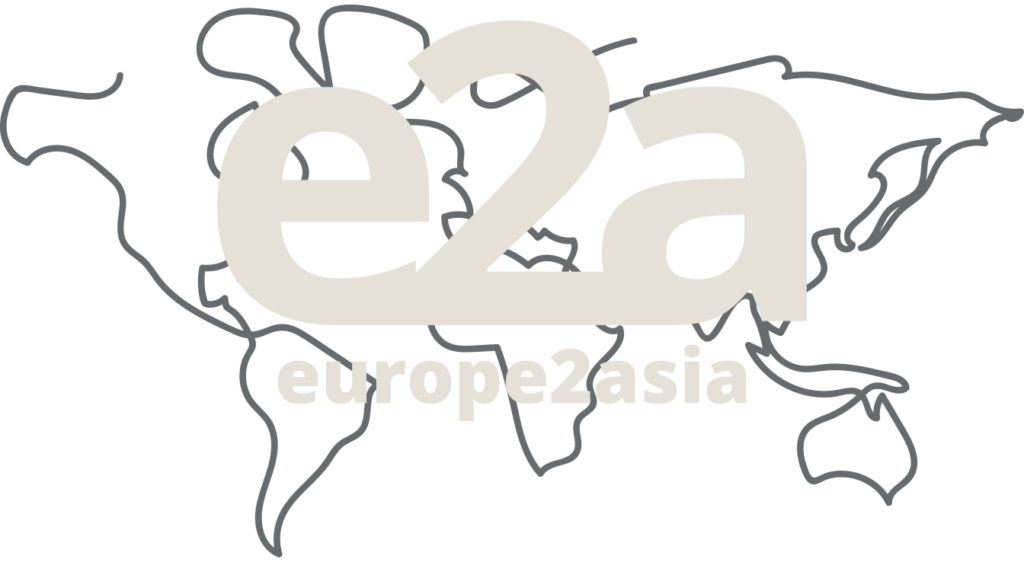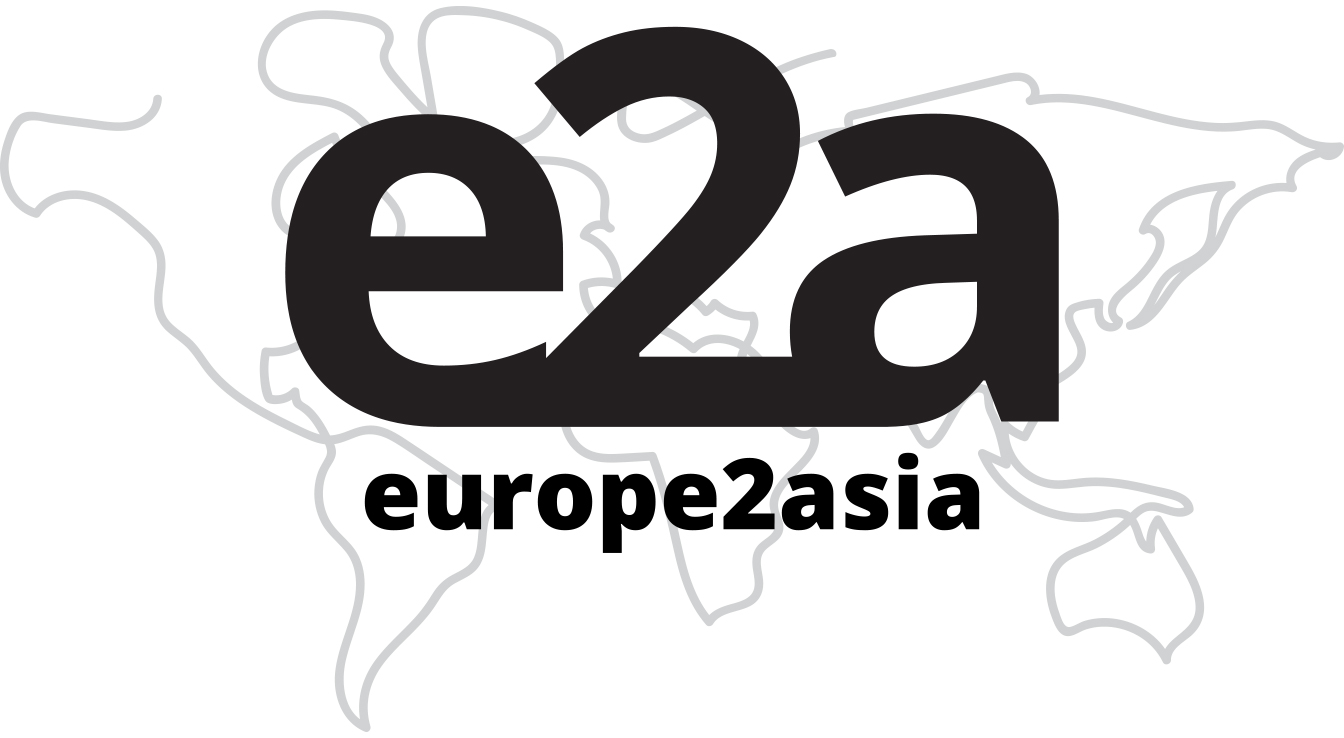Morocco’s culinary landscape is a vibrant tapestry of flavors, aromas, and textures, reflecting the country’s rich history and diverse cultural influences. From the bustling souks of Marrakech to the coastal towns of Essaouira, Moroccan cuisine offers a sensory journey that delights locals and travelers alike. The fusion of Berber, Arabic, Andalusian, and Mediterranean culinary traditions has given rise to an array of dishes that are as visually stunning as they are delicious. Each meal is an invitation to experience the essence of Moroccan hospitality, often served in communal settings that emphasize sharing and togetherness
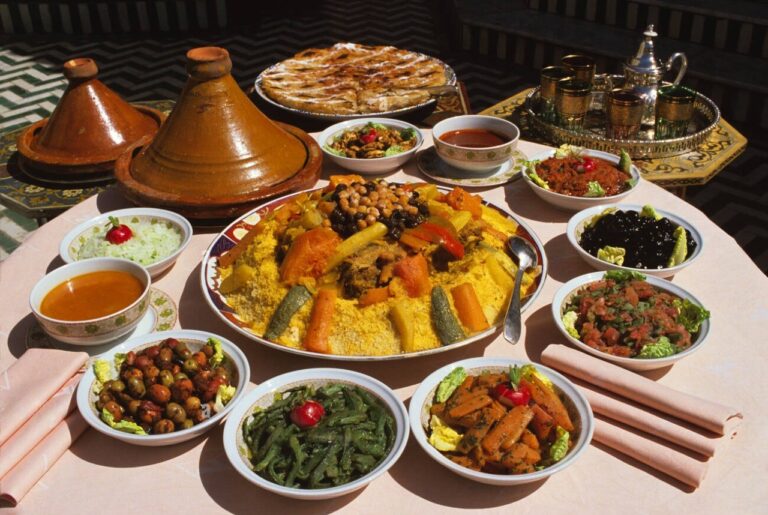
Central to Moroccan culinary traditions are the spices that infuse each dish with distinct flavors. Commonly used spices include cumin, coriander, saffron, cinnamon, and paprika, often combined in intricate blends such as ras el hanout. These spices, alongside fresh herbs like mint and cilantro, elevate simple ingredients into extraordinary dishes. The Moroccan dining experience is not just about the food; it is also about the rituals surrounding meal times, such as the art of pouring mint tea from a height to aerate the drink and enhance its flavor. Together, these elements create a dining experience that is both deeply rooted in tradition and constantly evolving.
Mint Tea
Mint tea, or “Moroccan whiskey” as it is affectionately known, is a cornerstone of Moroccan hospitality. This sweet and aromatic tea is made by steeping green tea with fresh mint leaves and sugar, often poured from a height to create a frothy top. Mint tea is more than just a beverage; it is a symbol of warmth, friendship, and tradition, often enjoyed throughout the day and offered to guests as a sign of respect and welcome.
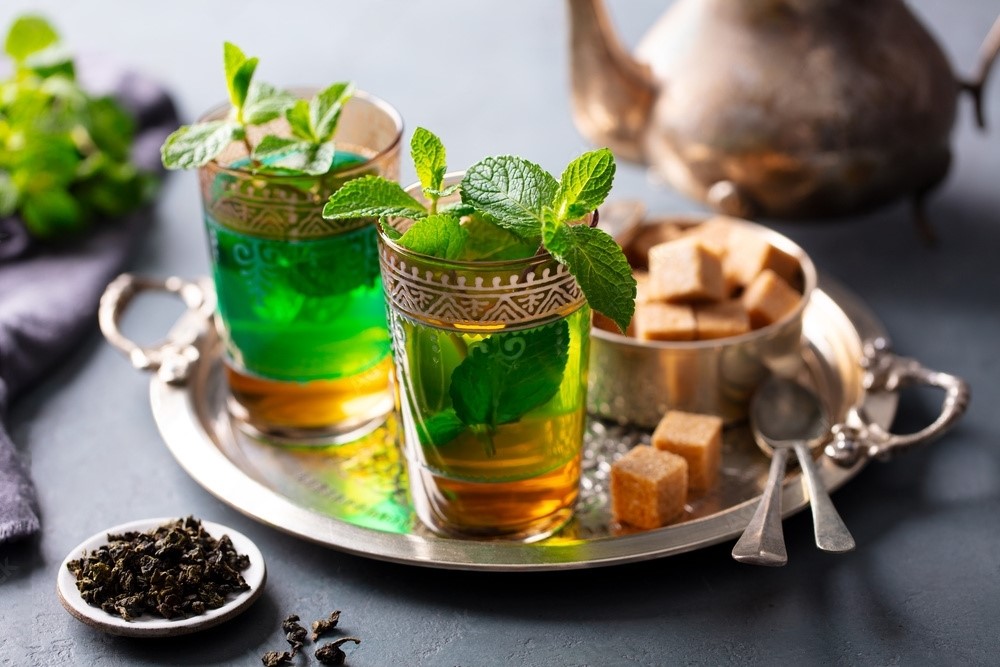
Gazelle Ankles
Gazelle ankles, or kaab el ghazal, are delicate crescent-shaped cookies filled with almond paste and flavored with orange blossom water. These pastries are a staple at Moroccan celebrations and are often served with mint tea. The name, which translates to “gazelle ankles,” reflects the cookies’ elegant and slender shape. Their subtle sweetness and fragrant aroma make them a beloved treat in Moroccan cuisine.
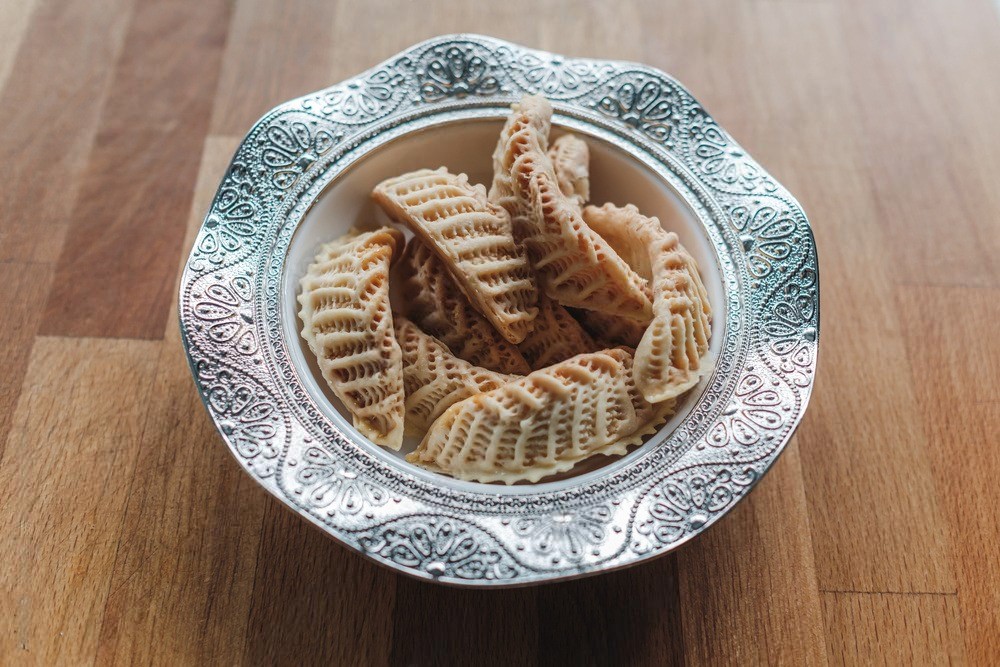
Tajine
Tajine, a quintessential Moroccan dish, is named after the earthenware pot in which it is cooked. This slow-cooked stew, available in a myriad of varieties, combines meat, poultry, or fish with a medley of vegetables, dried fruits, and nuts. The use of spices such as cumin, ginger, and saffron imbues the dish with a complex and aromatic flavor profile. Tajine is traditionally served with bread, allowing diners to scoop up the succulent ingredients and savory sauce, making it a communal and interactive dining experience.

Couscous
Couscous, Morocco’s national dish, is especially revered during Friday family gatherings. Made from steamed semolina grains, couscous is typically served with a hearty stew of meat and vegetables. The dish is flavored with a mix of spices, including cinnamon and turmeric, which impart a warm and comforting aroma. The tradition of sharing couscous on Fridays underscores its significance in Moroccan culture, symbolizing unity and familial bonds.

Pastilla
Pastilla is a unique Moroccan dish that can be served as both a savory main course and a sweet dessert. The savory version typically features layers of flaky phyllo pastry filled with spiced pigeon or chicken, almonds, and eggs, often dusted with powdered sugar and cinnamon. The dessert version, on the other hand, is filled with a sweet mixture of almonds, cinnamon, and sugar, showcasing the versatility and creativity of Moroccan cuisine. Both versions of pastilla highlight the delicate balance of sweet and savory flavors that characterize many Moroccan dishes.
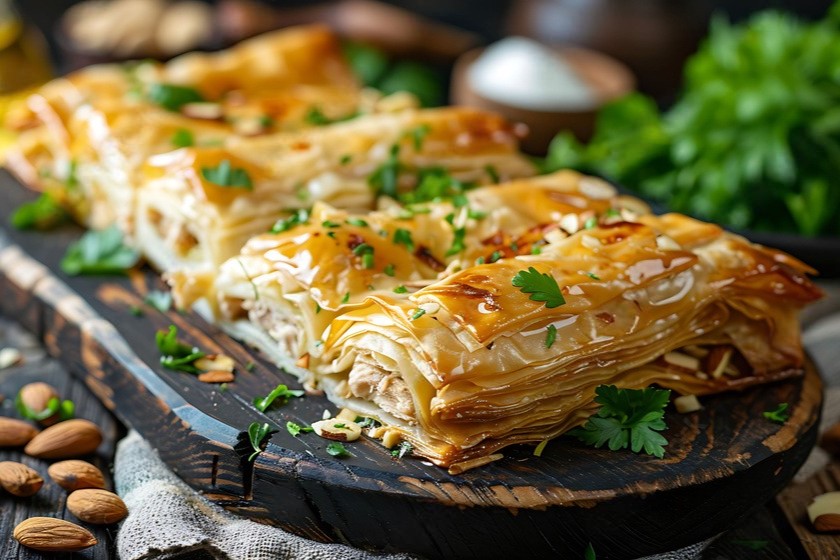
Rfissa
Rfissa is a traditional Moroccan dish often prepared for special occasions and family gatherings. It consists of slow-cooked chicken and lentils, served over a bed of shredded msemen (a type of Moroccan flatbread) and flavored with a blend of fenugreek, saffron, and ras el hanout. The dish is known for its comforting and hearty nature, making it a popular choice for celebrations and communal meals.
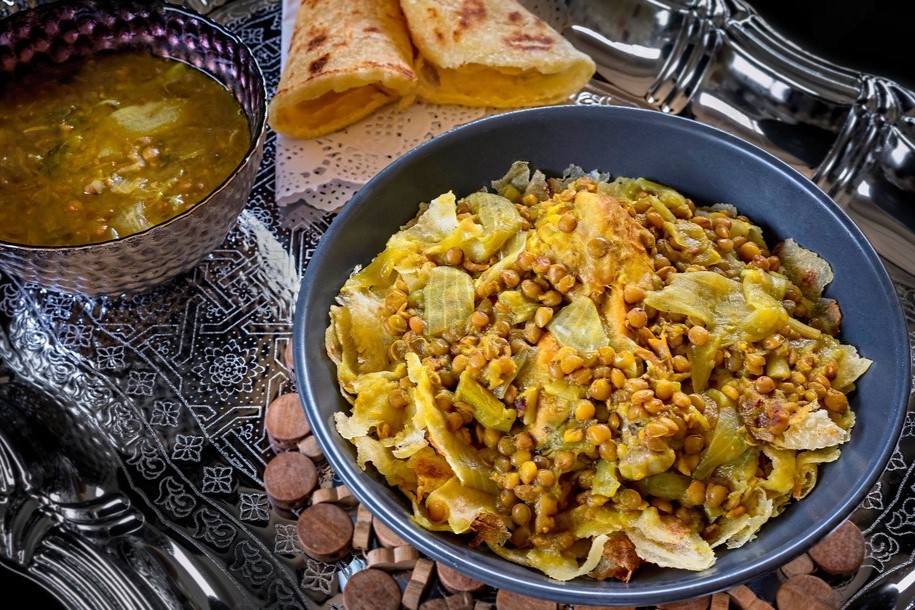
Harira
Harira is a staple soup in Moroccan cuisine, especially during the month of Ramadan. Made with tomatoes, lentils, chickpeas, and a variety of fresh herbs and spices, harira is both nutritious and flavorful. It is often served to break the fast at sunset, accompanied by dates and chebakia (a type of Moroccan pastry). The soup’s rich and hearty nature makes it a beloved dish that brings warmth and comfort to those who enjoy it.
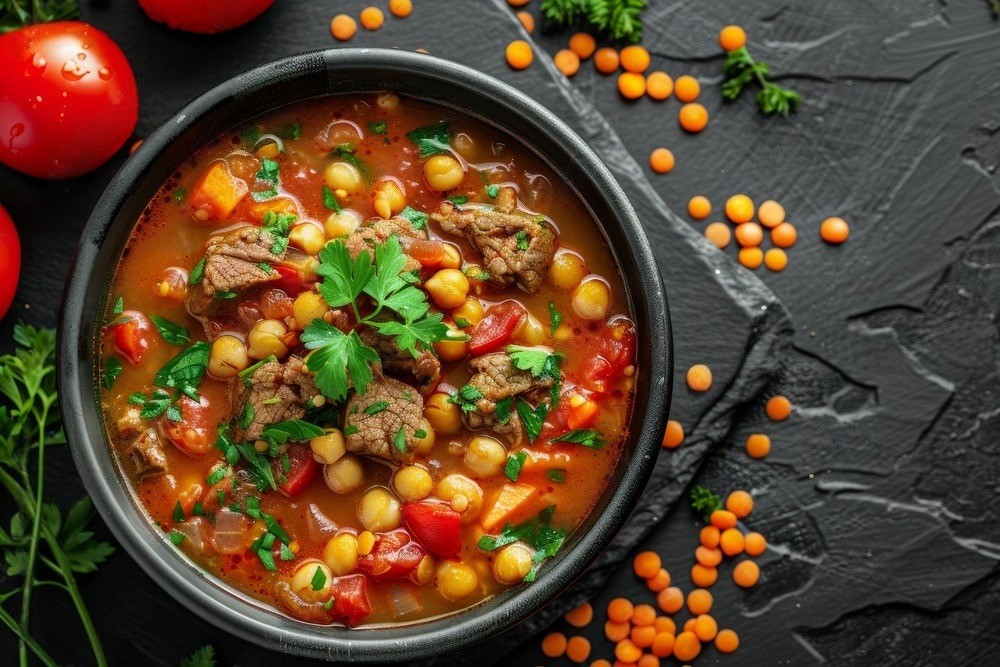
Tanjia
Tanjia is a specialty of Marrakech, known for its unique preparation method and rich flavors. This dish involves slow-cooking lamb or beef in a clay pot with a blend of preserved lemons, garlic, and an array of spices. The pot is then sealed and traditionally cooked in the ashes of a hammam (public bathhouse), allowing the meat to become incredibly tender and infused with the flavors of the spices. Tanjia is a true reflection of Marrakech’s culinary heritage and communal cooking traditions.
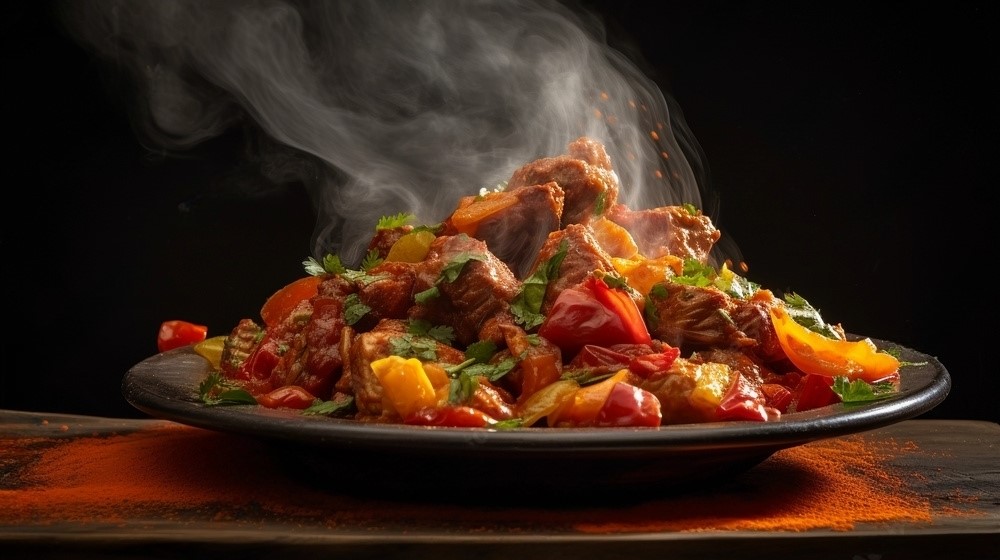
Moroccan Salads
Moroccan salads are a vibrant and essential part of the country’s cuisine, often served as starters or side dishes. These salads can range from simple combinations of fresh tomatoes, cucumbers, and onions, to more elaborate mixes of roasted peppers, eggplant, and carrots, often seasoned with olive oil, lemon juice, and a variety of herbs and spices. The emphasis on fresh, seasonal ingredients and bold flavors makes Moroccan salads a refreshing complement to the richer, spicier main dishes.
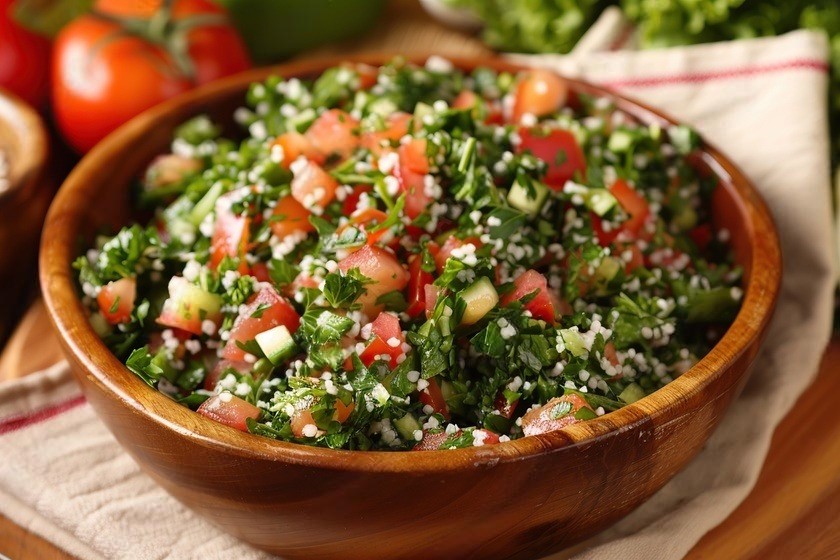
Mechoui
Mechoui is a celebration dish traditionally prepared for special occasions such as weddings and festivals. This dish involves roasting a whole lamb or sheep, often seasoned with a blend of spices and herbs, until the meat is tender and flavorful. The lamb is typically cooked over an open fire or in a pit, allowing it to develop a smoky and succulent taste. Mechoui is a communal dish, meant to be shared among family and friends, highlighting the importance of togetherness in Moroccan culture.
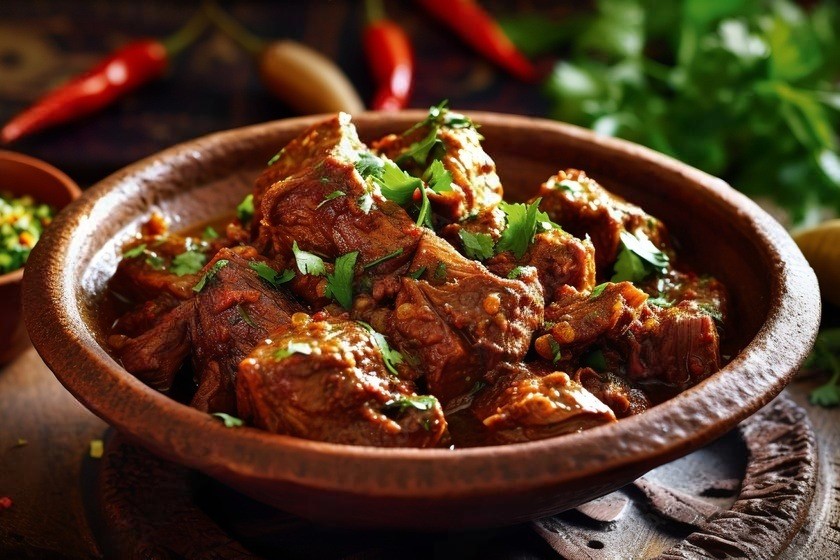
In conclusion, Morocco’s culinary heritage is a rich and diverse tapestry that reflects the country’s history, culture, and traditions. From the aromatic and flavorful tajines to the delicate sweetness of gazelle ankles, each dish tells a story and offers a unique taste experience. Complemented by the country’s vibrant wine production, Moroccan cuisine invites you to explore and savor the essence of this remarkable country. Whether enjoyed in the bustling streets of Marrakech or in the serene coastal towns, the food of Morocco is a celebration of life, community, and the enduring legacy of its culinary arts.
S’Tours: Authentic Morocco
Renowned for its authentic Moroccan travel experiences, S’Tours specializes in crafting tailor-made itineraries, offering a comprehensive range of options from luxury adventures to accessible travel. Strong relationships with well-known local hotel brands ensure competitive prices and exclusive deals, making S’Tours the ideal partner for operators looking to provide their clients with immersive cultural experiences, peaceful desert retreats, and exciting urban discoveries in Morocco.
Contact us today to embark on your bespoke journey through the enchanting landscapes and vibrant culture of Morocco!
